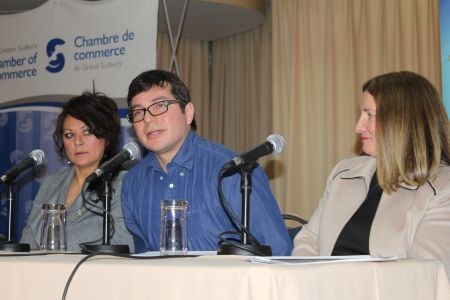When Detour Gold embarked on the construction of Canada's largest gold mine, Rachel Pineault, Detour's director of human resources and Aboriginal affairs, realized if the company wanted to foster good relations with the area's First Nations, it would have to respect their cultural practices.
And so Detour introduced cultural leave: the opportunity for First Nation employees to take time off to hunt for moose or goose in the fall and spring.
“There's not a rule towards what it is,” Pineault said. “The people that work for you will tell you what their communities celebrate and when they do it.”
Dealing with First Nation communities doesn't have to be a mystery, she contended. Companies should simply consider how they want to be dealt with on a day-to-day basis and apply the same approach to working with First Nation communities.
“One thing is very evident: it's all about relationships and it starts there,” said Pineault, who was speaking at Bridging Urban Aboriginal and Business Communities Feb. 8, an event hosted by the Sudbury Chamber of Commerce. “A relationship isn't built overnight.”
Located 180 km north of Cochrane in the Abitibi Greenstone Belt, the Detour Lake project is an open pit mineral reserve estimated to produce 650,000 ounces of gold annually over a 16-year mine life.
Early on in the process, Detour realized development would go more smoothly if First Nations were consulted from its inception. Starting with a visit by the company president to each of the area's First Nation chiefs, the company began a dialogue with the area's First Nations in 2006. Pineault then went on to implement a cross-cultural training program for all 1,200 workers at the mine site to “lay the foundation of knowledge” within the company.
She advocates building culture right into the business, by observing First Nation ceremonies, like smudging and prayers, incorporating Native art into the workplace and seeking counsel from local Elders. Engaging employees in cultural activities like building a teepee on site, hosting feasts, or holding craft-making nights can help foster understanding about the relevance of culture to First Nations people.
“You're only limited by your imagination when you're bringing culture into the workforce,” Pineault said.
Collaboration doesn't just accommodate cultural sensitivity. It's a smart move.
Darrel Manitowabi, chair of the Native Studies department at the University of Sudbury at Laurentian University, said it's become too easy for non-Natives to categorize Native people within a stereotype.
“Quite often an assumption to being Native is to be on reserve, to be a timeless, primitive being, and that conditions how we automatically assume how Native people are,” he said.
In reality, more Native people are living in urban areas than on reserve and have been since the 1970s. While there is a segment that experiences poverty, “education levels are rising, there is increasing post-secondary education attainment...and there's an emerging Aboriginal middle class” amongst young First Nation populations, Manitowabi said.
Racism, unfortunately, still emerges, working as a method of exclusion to eliminate Aboriginal competition in the workforce by creating barriers around the distribution and acquisition of capital, Manitowabi said.
“We think of Aboriginal people as experiencing poverty and coming from challenging backgrounds,” he said. “What's interesting to observe is that change is happening and there are Aboriginal people who have overcome those challenges, are participating in the Aboriginal community and are making a significant contribution to the City of Greater Sudbury.”
Suzanne Shawbonquit, founder and chair of the Aboriginal Peoples Council of Sudbury, said the key to engaging the young Aboriginal demographic is understanding the First Nation perspective.
“If you're interested in learning about the people you're going to do business with, understand the culture and what matters to them, because everything we do –our language, my name – is tied to the land,” she said. “We don't come from another planet, but we certainly do have a unique perspective on life and how we approach our relationships.”
Simple gestures, such as speaking with community members or visiting the reserve, can go a long way to developing trust and understanding between two parties.
“The corporate culture, your philosophy, and missions matter,” she said. “If you truly care, in terms of recruiting and retaining the Aboriginal or Indigenous population, you need to understand how that's going to work with your policies.”
Detour Gold's foresight has served it well. The company has successfully signed impact benefit agreements with the Moose Cree First Nation, the Wahgoshig First Nation and the Taykwa Tagamou Nation, as well as the Métis Nation of Ontario.
“Our vision is to become a leading intermediate gold producer—that's on the business side,” Pineault said. “But you can't do business alone and you can be much more successful with your partners.”




